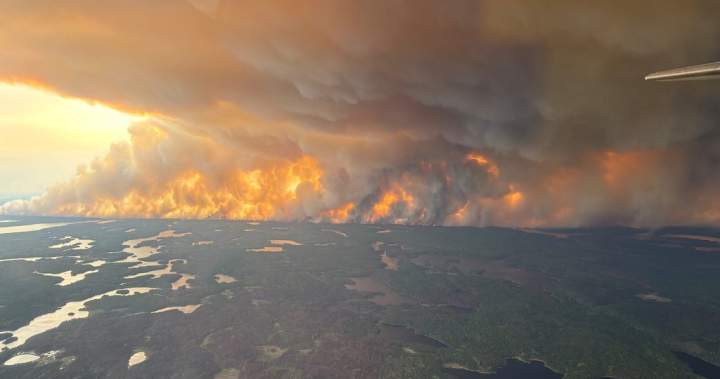When Lori Forbes thinks back to last spring, it’s hard for her not to feel emotional.
“Looking back, it’s pretty overwhelming all the things we actually worked through during that time,” Forbes said.
Six months ago, wildfires threatened much of Manitoba, including in the RM of Kelsey where Forbes works as the Municipal Emergency Coordinator. Cranberry Portage residents were forced to evacuate.
“This is the second year in a row we evacuated Cranberry Portage in 2024 and again in 2025 and the rest of our RM was in 2025,” Forbes said.
2025 was Manitoba’s worst wildfire season in at least 30 years. Forbes says they’re working every day to prepare for next year’s potential fires.

Get daily National news
Get the day’s top news, political, economic, and current affairs headlines, delivered to your inbox once a day.
“What needs to change? What do we need to improve?” Forbes said.
Manitoba currently has 66 active wildfires. Sixty-three are in the north region and three are in the east.
The Manitoba Wildfire Service is monitoring all remaining fires and a decent snowfall could extinguish most of them. However, they can still pose a threat to next year by smouldering underground.
“You can have snow on the surface and the fire is growing very slowly, just smouldering. Spring comes, the snow melts. It gets warm and dry and the fire can come back to the forest floor,” Mike Flannigan, a wildland fire professor at Thompson Rivers University, said.
Flannigan says this is called overwintering fires or zombie fires, because they never die.
“Our fire reality is changing. We are seeing more fires, more intense fires,” Flannigan said.
Not only can wildfires linger underground, but they also have a lingering affect on some communities.
“Until fires are classified as out, very many people are challenged getting house insurance,” Forbes said.
Reasons like that make planning for the next wildfire season more important than ever.
© 2025 Global News, a division of Corus Entertainment Inc.





